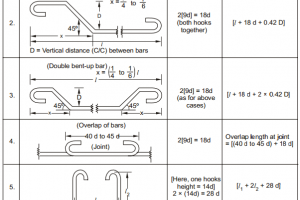Construction Project Quality Management
What is Quality?
- FEDEX - “Performance to the standard expected by the customer”
- General Services Administration - “Meeting the customer’s need the first time and every time”
- BOEING - “Providing customers with products and services that consistently meet their needs and expectations.
- US Department of Defense - “Doing the right thing right the first time, always striving for improvement, and always satisfying the customer”.
Quality can be defined in terms of the agent. Who is the judge of quality?
Quality involves meeting or exceeding customer expectations.
Quality applies to products, services, people, processes, and environments.
Quality is an ever-changing state (i.e., what is considered quality today may not be good enough to be considered quality tomorrow).
Quality is a dynamic state associated with products, services, people, processes and environments that meets or exceeds expectations.
The Total Quality Approach
Total quality is an approach to doing business that attempts to maximize the competitiveness of an organization through the continual improvement of the quality of its products, services, people, processes and environments.
Characteristics of the Total Quality:
- Strategically based
- Customer focus (internal and external)
- Obsession with quality
- Scientific approach to decision making and problem solving
- Long-term commitment
- Teamwork
- Continual process improvement
- Education and training
- Freedom through control
- Unity of purpose
- Employee involvement and empowerment
Two Views of Quality
Elements of Total Quality
Strategically Based
- Comprehensive strategic plan with following elements: vision, mission, broad objectives and following activities
- Provides sustainable competitive advantage in the marketplace.
Customer Focus
- “Customer is the driver”.
- External customers: define the quality of the product or service delivered.
- Internal customers: define the quality of people, processes, and environment associated with the products or services.
Obsession with Quality
- All personnel at all levels approach all aspects of the job from the perspective of “How can we do this better?”.
- “Good enough” is never good enough.
Scientific Approach
- Hard data are used in establishing benchmarks, monitoring performance, and making improvements.
- Decision making and problem solving is based on scientific principals.
Long-term Commitment
- Quality improvement is NOT another management innovation but a whole NEW way of doing business that requires an entirely new corporate culture.
Teamwork
- Internal competitiveness vs. External competitiveness
Continual Process Improvement
- Continually improve systems (environments) where products are developed and services are delivered by people.
Education and Training
- Best way to improve people on a continual basis.
- Train hardworking people “How to work smart?”
Freedom through Control
- Involving and empowering employees to simultaneously bring more minds to bear on the decision-making process and increase the ownership employees feel about decisions that are made.
- Well-planned and carried-out controls (not loss of management control).
The Deming Cycle
- Conduct consumer research and use it in planning the product (PLAN).
- Produce the product (DO).
- Check the product to make sure it was produced in attendance with the plan (CHECK).
- Market the product (ACT).
- Analyze how the product is received in the market in terms of quality, cost and other criteria (ANALYZE)
Deming’s Fourteen Points
- Create constancy of purpose toward the improvement of products and services in order to become competitive, stay in business, and provide jobs. Adopt the new philosophy. Management must learn that it is a new economic age and awaken to the challenge, learn their responsibilities, and take on leadership for change.
- Stop depending on inspection to achieve quality. Build in quality from the start. Stop awarding contracts on the basis of low bids.
- Improve continuously and forever the system of production and service, to improve quality and productivity, and thus constantly reduce costs. Institute training on the job.
- Institute leadership. The purpose of leadership should be to help people and technology work better.
- Drive out fear so that everyone may work effectively.
- Break down barriers between departments so that people can work as a team. Eliminate slogans, exhortations, and targets for the workforce. They create adversarial relationships.
- Eliminate quotas and management by objectives. Substitute leadership. Remove barriers that rob employees of their pride of workmanship. Institute a vigorous program of education and self-improvement. Make the transformation everyone's job and put everyone to work on it.
- Lack of constancy of purpose to plan products and services that have a market sufficient to keep the company in business and provide jobs.
- Emphasis on short-term profits; short-term thinking that is driven by a fear of unfriendly takeover attempts and pressure from bankers and shareholders to produce dividends.
- Personal review systems for managers and management by objectives without providing methods or resources to accomplish objectives. Performance evaluations, merit ratings, and annual appraisals are all part of this disease.
- Job hopping by managers.
- Using only visible data and information in decision making with little or no consideration given to what is not known or cannot be known.
- Excessive medical costs.
- Excessive costs of liability driven up by lawyers that work on contingency fees.
Juran’s Contributions
1. Build awareness of both the need for improvement and opportunities for improvement.
2. Set goals for improvement.
3. Organize to meet the goals that have been set.
4. Provide training.
5. Implement projects aimed at solving problems.
6. Report progress.
7. Give recognition.
8. Communicate results.
9. Keep score.
10. Maintain momentum by building improvement into the company's regular systems.
Juran’s Contributions
Quality Planning
- Determine who the customers are:
- Identify customers’ needs.
- Develop products with features that respond to customer needs.
- Develop systems and processes that allow the organization to produce these features.
- Deploy the plans to operational levels.
Quality Control
- Assess actual quality performance.
- Compare performance with goals.
- Act on differences between performance and goals.
Quality Improvement
- Develop the infrastructure necessary to make annual quality improvements.
- Identify specific areas in need of improvement, and implement improvement projects.
- Establish a project team with responsibility for completing each improvement project.
- Provide teams with what they need to be able to diagnose problems to determine root causes, develop situations, and establish control that will maintain gains made.
Crosby’s Contributions
Crosby’s Quality Vaccine Ingredients
- Determination.
- Education.
- Implementation.
Total Quality Efforts Succeed
- The successful organizations avoid these errors:
- Senior management delegation and poor leadership.
- Team mania.
- Deployment process.
- Taking a narrow, dogmatic approach.
- Confusion about the differences among education, awareness, inspiration, and skill building
Six Sigma Concept
- Identify the product characteristics wanted by the customers.
- Classify the characteristics in terms of their criticality.
- Determine if the classified characteristics are controlled by part and/or process.
- Determine the maximum allowable tolerance for each classified characteristic.
- Determine the process variation for each classified characteristic.
- Change the design of the product, process, or both to achieve a Six Sigma processes performance.
Six Sigma Concept
What is Six Sigma?
Six Sigma is an extension of total quality management which has the aim of taking process and product quality to levels where all customer requirements are met.
How is Six Sigma Achieved?
- By improving process performance.
- Or, Without improving the process at all if the specifications describing acceptable product can be loosened enough to correspond to the original process’s ± 6 sigma points
.
The Future of Quality Management
- Demanding global customers.
- Shifting customer expectations.
- Opposing economic pressures.
- New approaches to management.
- A total commitment to continually increasing value for customers, investors, and employees.
- A firm understanding that quality is defined by customers, not the company.
- A commitment to leading people with a bias for continuous improvement and communication.
- A recognition that sustained growth requires the simultaneous achievement of four objectives all the time, forever: (a) customer satisfaction, (b) cost leaderships, (c) effective human resources, and (d) integration with the supplier base.
- A commitment to fundamental improvement through knowledge, skills, problem solving and teamwork.









